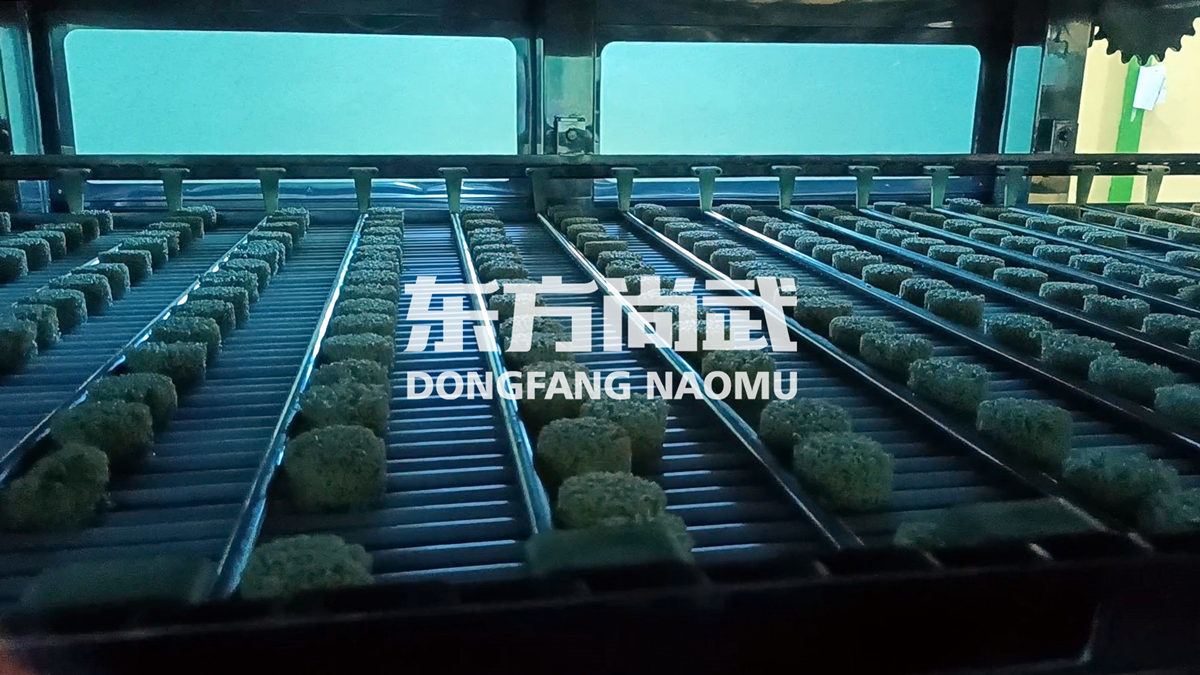The Critical Role and Operational Procedures of Cooling Systems in Instant Noodle Production
Classification:
News
Group News
Industry News
Special Reports
Author:
DONGFANG NAOMU
Source:
www.noodlemachinery.com
Release time:
2025-07-07
In the highly automated world of instant noodle manufacturing, every step of the process plays a vital role in determining the final product’s quality, safety, and shelf life. Among these steps, proper cooling stands out as one of the most crucial stages, ensuring that the noodle blocks are stabilized before packaging. Without an efficient cooling system, the noodles could retain excess heat and moisture, leading to potential spoilage, texture degradation, or even microbial growth. The cooling device, therefore, serves as a key component in maintaining product integrity, and its operation must be carefully controlled to achieve consistent and optimal results.
The cooling process begins with the activation of the transmission mesh belt, which carries the freshly steamed and cut noodle blocks through the cooling chamber. Before introducing the noodles, operators must allow the belt to run idle for approximately 2 to 3 minutes to confirm that it moves smoothly without any misalignment or mechanical issues. This preliminary check is essential because any irregularity in the belt’s movement could disrupt the even distribution of noodles, leading to inconsistent cooling. Once the belt is confirmed to be functioning correctly, the next step involves starting the direct cooling fans. These fans are strategically positioned along the top of the production line to ensure uniform airflow over the entire surface of the noodle blocks.
A critical consideration when activating the cooling fans is the need for gradual engagement. Sudden bursts of cold air can cause rapid temperature fluctuations, which may negatively impact the noodles’ structural integrity, leading to brittleness or uneven moisture distribution. Instead, operators should initiate the fans in stages, allowing the system to stabilize before reaching full cooling capacity. Only after both the mesh belt and cooling fans are confirmed to be operating normally should the full cooling process commence. This systematic approach minimizes the risk of thermal shock and ensures that the noodles cool evenly, preserving their desired texture and preventing clumping or deformation.
Beyond the basic operational steps, several additional factors contribute to the efficiency of the cooling process. The ambient temperature and humidity levels in the production facility, for instance, can influence cooling performance, necessitating adjustments in fan speed or cooling duration. Regular maintenance of the cooling system is also crucial, as dust accumulation on fan blades or wear and tear on the mesh belt can reduce efficiency over time. Furthermore, some advanced production lines incorporate sensors and automated controls to monitor temperature in real-time, allowing for dynamic adjustments that optimize cooling without human intervention.
In conclusion, the cooling stage in instant noodle manufacturing is far more than just a passive temperature reduction step—it is a carefully controlled process that directly impacts product quality and safety. From the initial activation of the transmission mesh belt to the gradual engagement of cooling fans, each action must be executed with precision to ensure consistent results. Companies like Zhengzhou Dongfang Naomu Food Machinery Co., Ltd. recognize the importance of this stage and design their equipment to meet these stringent operational requirements. By adhering to best practices in cooling system management, manufacturers can guarantee that their noodles meet the highest standards of texture, appearance, and shelf stability, ultimately delivering a superior product to consumers worldwide.


